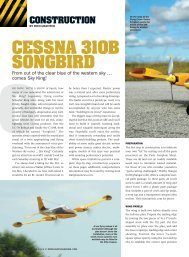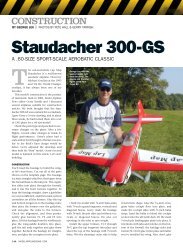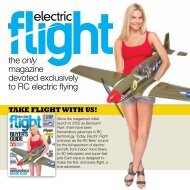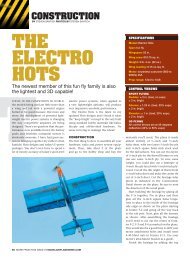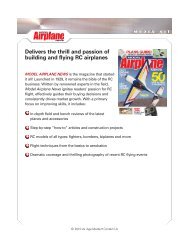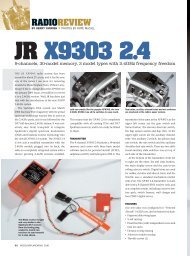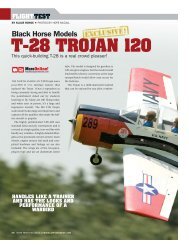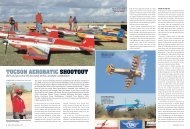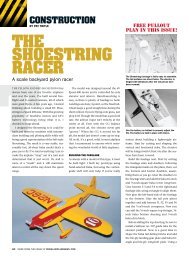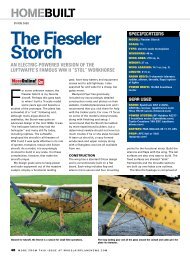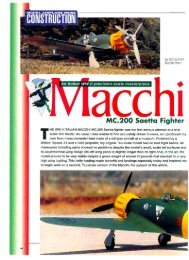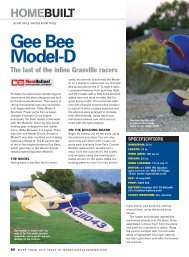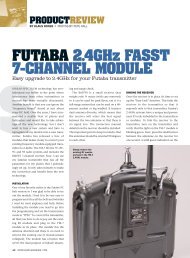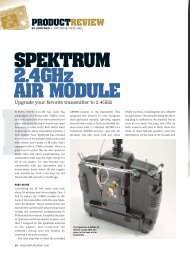Create successful ePaper yourself
Turn your PDF publications into a flip-book with our unique Google optimized e-Paper software.
TEST<br />
Northeast Sailplane Products<br />
Electric slow-flyer ARF by John Tracey<br />
he Virus 400A is the largest of "^"<br />
Northeast Sailplane Products'<br />
(NSP's) series of Virus park flyers.<br />
It's designed as a lightly loaded trainer, and it<br />
has a huge, flat-bottom wing with giant barn-door<br />
ailerons. A 57-inch wingspan adds to its stability. The unique<br />
style of its swept-up wingtips and teardrop-shape fuselage combines to create an attractive plane. The tail boom is formed<br />
of dual carbon-fiber tubes for strength and lightness. Virus 400A comes equipped with a Speed 480 motor and an MP Jet<br />
3.5:1 reduction drive. It also comes with a propeller and landing gear with lightweight foam wheels. The plane is covered<br />
with iron-on Solarfilm.<br />
WING CONSTRUCTION<br />
Building the Virus 4OOA is pretty basic;<br />
the written instructions include diagrams<br />
to help you build the model. A few details<br />
are omitted from the instructions, but if<br />
you use your common sense, you'll have<br />
no problems building the plane.<br />
The first step is to join the wing halves.<br />
A small metal rod reinforces the joint<br />
between the halves. The rod slips into a<br />
62 MODEL AIRPLANE NEWS<br />
small brass-tube sleeve in each wing half.<br />
After using 5-minute epoxy to join the<br />
wing, I wrapped the joint with clear tape<br />
for extra reinforcement. When finished,<br />
the wing is more than strong enough for<br />
any maneuver this plane will do.<br />
The "A" in Virus 400A stands for<br />
"ailerons," and NSP is not kidding. The<br />
huge barn-door ailerons account for 30<br />
percent of the wing chord, and each is<br />
controlled by an individual servo. One of<br />
the advantages of this setup is that it<br />
allows the ailerons to be mixed with a<br />
computer radio and used as flaperons for<br />
very slow landings and short takeoffs. I<br />
recommend that you use servos with at<br />
least 14 ounces of torque; I used Cirrus<br />
CS-20BB Sub Micros. If you don't have a<br />
computer radio, you can use a Y-connector<br />
to connect the aileron servos to the



